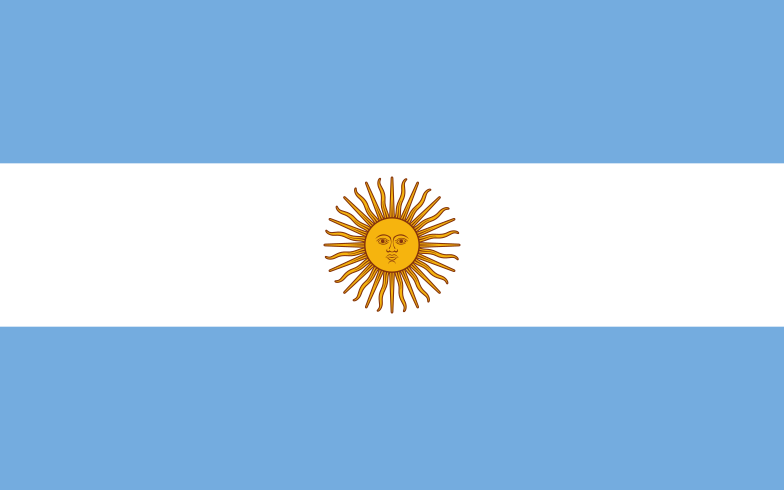 On this day in ...
On this day in ...… 1816, an assembly of representatives from the provinces met in the Congress of Tucumán and declared the full independence of the United Provinces of South America (present-day Argentina, flag at right) from the Spanish Crown. Prior to this, Argentina had been part of the Spanish Viceroyalty of the Río de la Plata, whose limits also roughly contained the territories of present-day Bolivia, Paraguay, and Uruguay. It was ruled by a viceroy appointed by the Spanish Crown and guarded by the Spanish royal army. Part of the conflict between the settlers and the crown can be traced to the traditional, full prohibition of trading with all countries except Spain. After the Napoleonic invasion of Spain and the consequent imprisonment of Spain's king, a revolutionary wave broke out in the colony, leading to the declaration of independence on this day. Bolivia and Uruguay subsequently declared independence in 1825 and 1828, respectively. Argentine Independence Day is celebrated annually on July 9 to commemorate this event.
 … 1932, the Constitutionalist Revolution of 1932 (sometimes also referred to as the Paulista War), the uprising of part of the population of the Brazilian state of São Paulo against the federal government, began. A response to the Revolution of 1930, which ended the autonomy that São Paulo had enjoyed under the constitution of 1891, the uprising started after 5 protesting students were killed by government troops. A movement then formed; it advocated the overthrow of the federal government and even the secession of São Paulo from the Brazilian federation. Although the São Paulo revolt would be crushed militarily in October, the end of the constitutionalist revolution marked the beginning of the democratization process. The Constitutionalist Revolution is celebrated on this day in the city of São Paulo. (left, a Paulista propaganda poster during the Constitutionalist Revolution; image credit)
… 1932, the Constitutionalist Revolution of 1932 (sometimes also referred to as the Paulista War), the uprising of part of the population of the Brazilian state of São Paulo against the federal government, began. A response to the Revolution of 1930, which ended the autonomy that São Paulo had enjoyed under the constitution of 1891, the uprising started after 5 protesting students were killed by government troops. A movement then formed; it advocated the overthrow of the federal government and even the secession of São Paulo from the Brazilian federation. Although the São Paulo revolt would be crushed militarily in October, the end of the constitutionalist revolution marked the beginning of the democratization process. The Constitutionalist Revolution is celebrated on this day in the city of São Paulo. (left, a Paulista propaganda poster during the Constitutionalist Revolution; image credit)(Prior July 9 posts are here and here.)



